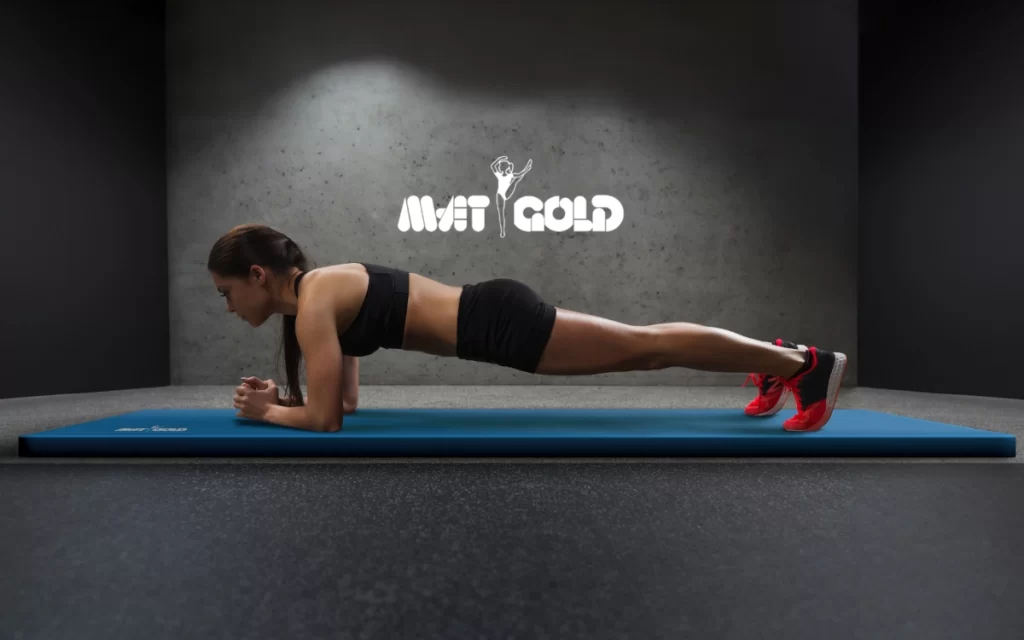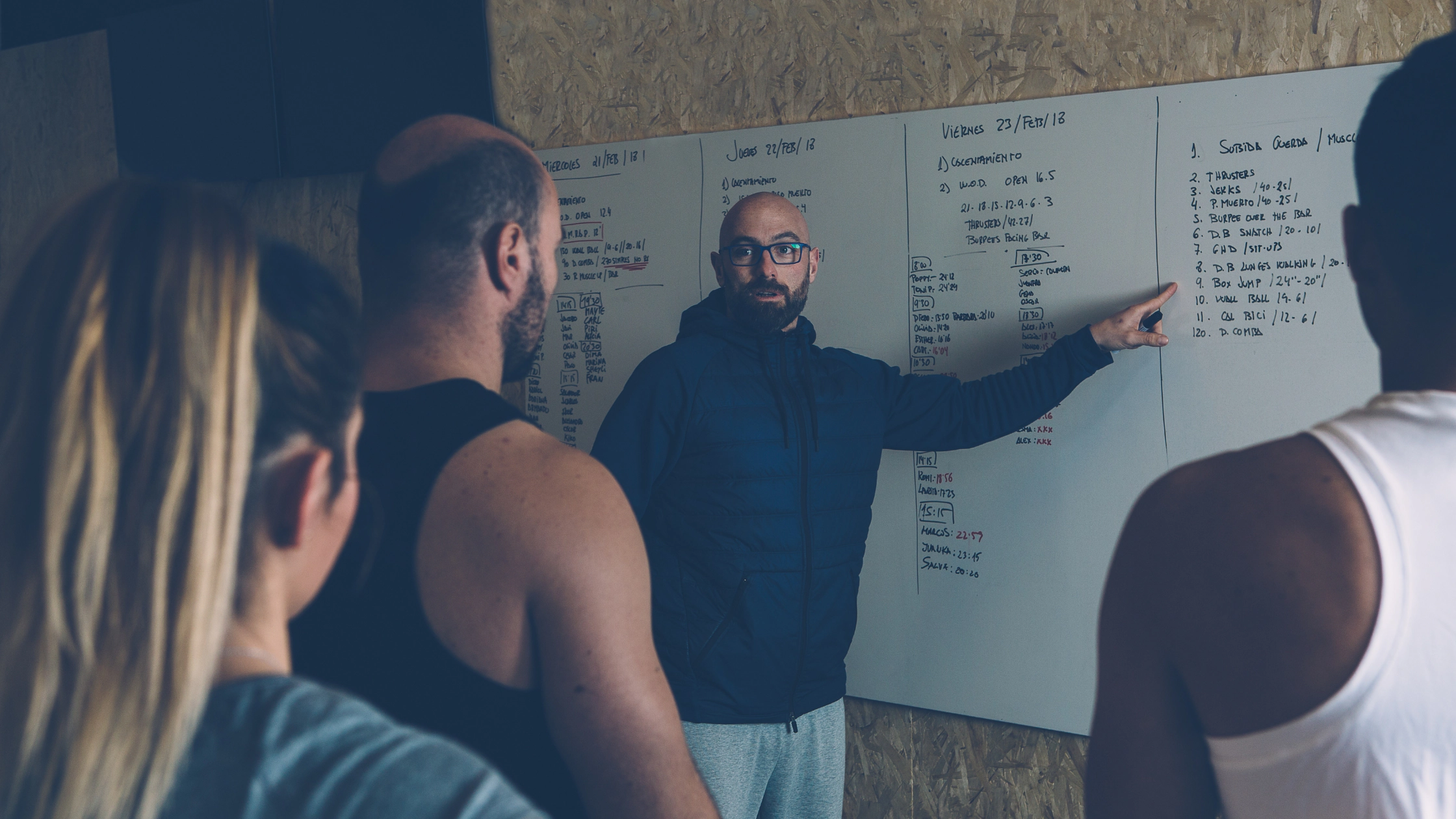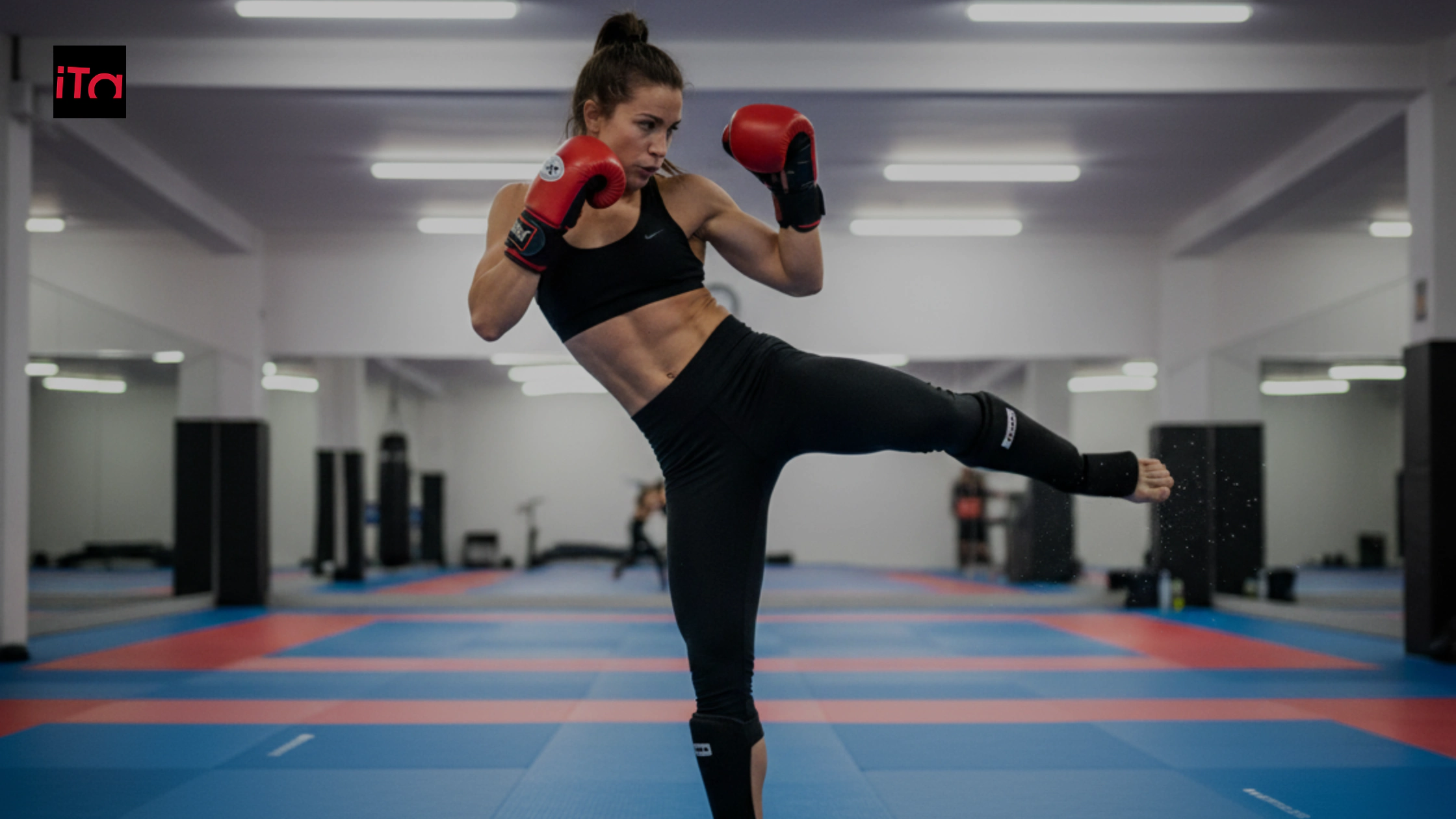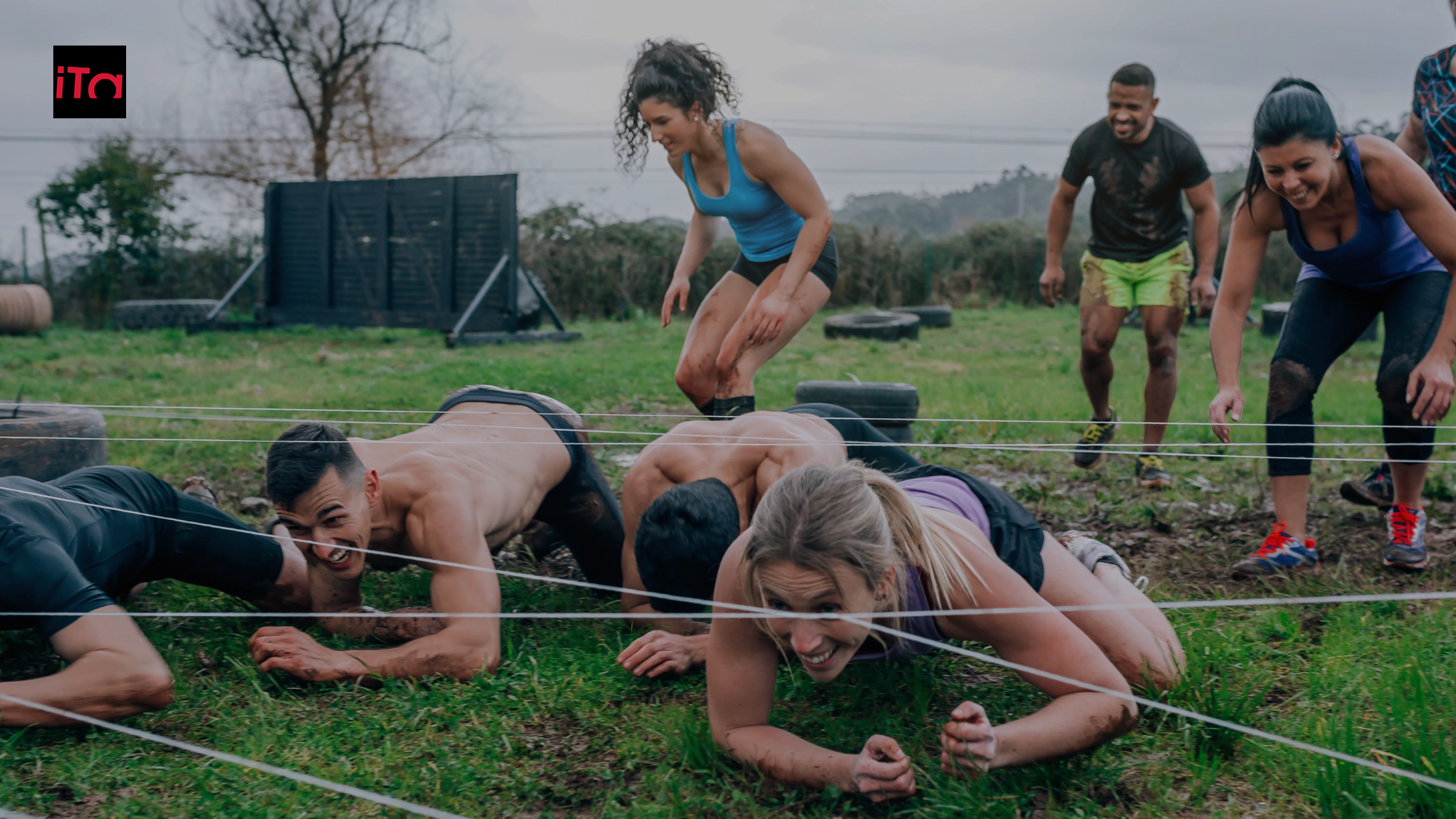OCR Training: The Complete Guide to Preparing for Obstacle Course Racing
L'Obstacle Course Racing (OCR) is one of the most challenging and rewarding sports disciplines that combines strength, endurance, agility and determination. Whether you are a beginner or an experienced athlete, a OCR training well-structured is essential for successful racing. In this comprehensive guide, we’ll explore all aspects of OCR training, from beginner and advanced training plans, to specific exercises and the equipment you need, including Bortolotto mats made by iTatami, ideal for race preparation as well as the race itself.
In the course of the artistic gymnastics training, athletes gradually improve their ability, starting from simple exercises up to complex and spectacular movements. The basis of every artistic gymnastics lesson It starts with a proper warm-up, followed by a series of exercises that focus on different areas of the body, preparing it for more advanced movements.
In the following sections, we will explore basic techniques, workout routines, and how these exercises can be performed both in the gym and at home to gradually improve strength and flexibility.
Content index
Introduction to OCR Training
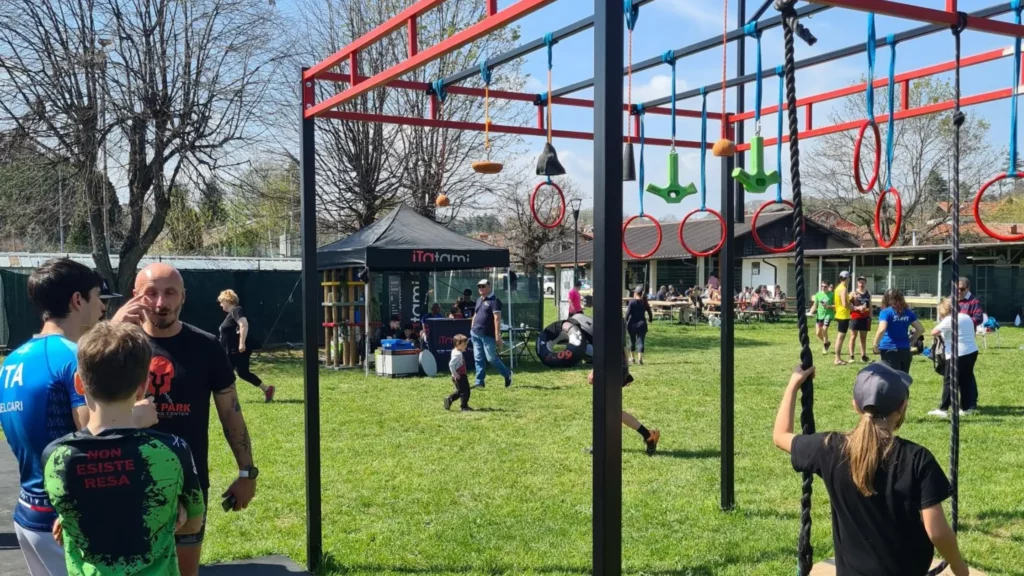
L'Obstacle Course Racing (OCR) is a rapidly growing sport that combines elements of running and overcoming physical obstacles. These races, which can vary in length and difficulty, require a mix of Force, resistence, agility And determination. To best face a race OCR, it is essential to have a plan of training well structured that prepares the body and mind to overcome any challenge.
The Importance of OCR Training
A OCR training specific is essential to adapt the body to this sport. Unlike traditional running ortraining in the gym, theOCR requires a balanced mix of aerobic and anaerobic capacity, along with considerable functional strengthAthletes must be prepared to run over rough terrain, climb walls, lift weights, crawl under obstacles, and cross sections of water or mud.
OCR Training for Beginners and Advanced
The approach to theOCR training varies depending on the athlete's experience level. For beginners, the main goal is to develop a solid foundation of resistence And general force, learning the fundamental techniques to overcome obstacles. Advanced athletes, on the other hand, focus on refining specific skills, increasing speed and efficiency in overcoming obstacles, as well as improving the mental resistance to tackle the longest and most challenging races.
Main Objectives of OCR Training
The key objectives of theOCR training include:
- Cardiovascular Endurance Development: Essential for tackling long distances and maintaining a constant pace during the race.
- Increase Functional Strength: Necessary for overcoming obstacles such as climbing walls or carrying heavy objects.
- Improved Mobility and Flexibility: To facilitate the complex movements required during the race and reduce the risk of injury.
- Refining Obstacle Overcoming Techniques: Learn and perfect climbing, jumping, crawling and lifting techniques to overcome obstacles efficiently and safely.
For more general information about theOCR and to get closer to the discipline, we recommend you visit the International Federation of OCR and the Spartan Race, two of the main bodies that organize competitions and promote theOCR worldwide.
OCR Training Plan for Beginners
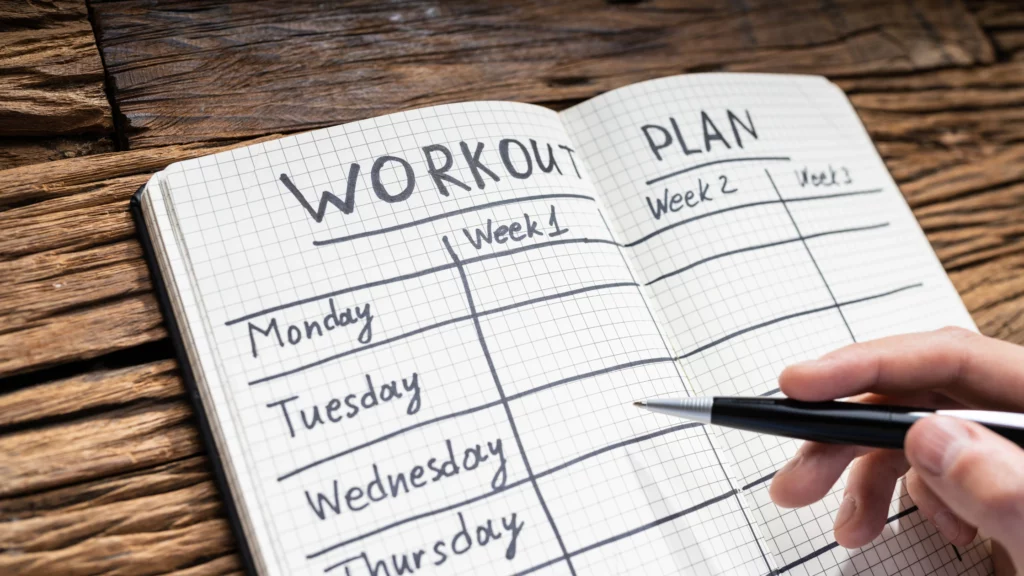
Attend an event OCR It can seem intimidating, especially for newbies. However, with a well-structured training plan, you can develop the skills needed to approach races with confidence. In this section, we will explore a plan OCR training for beginners designed to build strength, endurance and obstacle-overcoming skills.
OCR Training for Beginners: How to Get Started
The first step in preparing for a race Obstacle Course Racing is to establish a solid foundation of resistence And functional strength. Here are some tips on how to get started on your own OCR training:
- Building Cardiovascular Endurance: Start with running sessions on varying terrain, such as hills and trails, to get your body used to different surfaces and inclines. Try to run at least 3 times a week, gradually increasing the distance and intensity.
- Developing Functional Strength: Incorporate strength exercises that replicate the movements required during an OCR race. Exercises such as squats, lunges, push-ups, and pull-ups are essential for strengthening all parts of the body.
- Improve Flexibility: Don’t neglect stretching and flexibility work. Mobility exercises like yoga can help prevent injuries and improve your ability to move smoothly during the race.
Week Type of OCR Training for Beginners
Here is a sample weekly training plan for beginners preparing for a competition. OCR:
- Monday: Light trail run (30-45 minutes) + Stretching.
- Tuesday: Functional Strength Circuit (squats, lunges, push-ups, pull-ups) + Core Exercises.
- Wednesday: Active rest (light walking, yoga).
- Thursday: Uphill running (30 minutes) + Stretching.
- Friday: OCR circuit in the gym (simulation of obstacles with weights and bar) + Work on grip strength.
- Saturday: Long run on mixed terrain (60 minutes) + Stretching.
- Sunday: Complete rest or active rest (light swimming, walking).
This plan of OCR training for beginners is designed to gradually build the endurance and strength needed to tackle an OCR race. The variety of activities ensures that the body gets used to the different types of effort required during the competition.
Fundamental OCR Exercises to Build Strength and Endurance
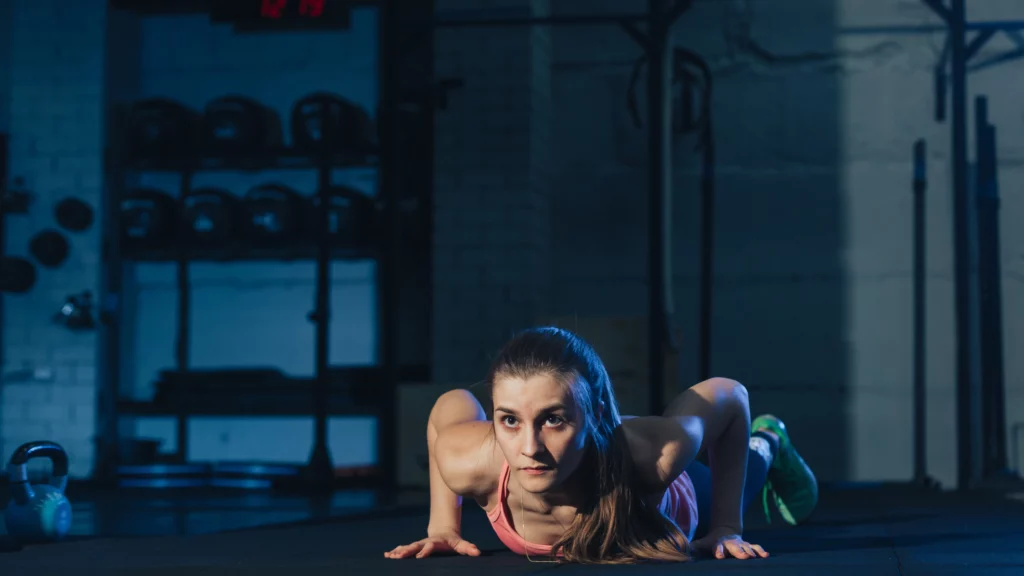
In addition to running, some exercises are particularly effective for improving your performance in an OCR race. Here are some of the OCR exercises fundamentals you should include in your training plan:
- Burpees: A complete exercise that involves the whole body, useful for developing resistance and explosive power.
- Pull-ups: They improve upper body strength, which is essential for overcoming obstacles like walls and ropes.
- Push-ups: They strengthen the chest, shoulders and triceps, which are essential for sections that require pushing or climbing.
- Lunges: They build leg strength and improve stability, which is essential for uneven terrain and overcoming obstacles.
- Bear Crawls: Exercise that develops strength and endurance throughout the body, simulating the movements needed to overcome obstacles on the ground.
These exercises, combined with a running and stretching routine, will best prepare you to face the challenges of a race. OCR.
Strength Exercises
To improve power and stability, it is essential to include specific strength exercises for artistic gymnastics. These exercises target the legs, arms and core:
- Squats and lunges: These movements improve leg strength, which is crucial for jumping and landing.
- Plank and leg raises: They strengthen the core, which is essential for maintaining body control during acrobatic movements.
- Push-ups: They work on the shoulders and arms, which are necessary to support the weight of the body during exercises such as handstands.
Flexibility Exercises
Flexibility is a key quality in artistic gymnastics and can be developed through a series of dynamic stretching exercises:
- Shoulder and back stretches: Exercises like the bridge improve mobility and flexibility in the back.
- Leg Stretch: Stretching your legs helps you perform movements like splits and jumps with greater range and grace.
Cardiovascular Training
Cardiovascular endurance is equally important, especially during bodyweight routines that require continuous execution:
- Jogging or skipping rope: These exercises improve cardiovascular endurance and help maintain energy during a routine.
There athletic training artistic gymnastics provides athletes with a solid foundation needed to best meet the physical challenges of gymnastics. Including a strength and flexibility routine in your training program is essential to improving performance and reducing the risk of injury.
Advanced OCR Training

Once you have built a solid foundation of Force And resistence with the plan of OCR training For beginners, it's time to take your workout to the next level. TheAdvanced OCR training focuses on intensification and progression, with the aim of improving your performance and preparing you for longer, more technically challenging races.
How to Go from Beginner to Advanced Level
The transition from one level of OCR training for beginners to advanced requires an increase in the intensity and complexity of the exercises. Here are some tips on how to make this transition:
- Increase Running Distance and Intensity: Start running longer distances and include interval training, hill sprints, and rough terrain runs. This helps build endurance as well as mimic real-world OCR racing conditions.
- Incorporate Advanced Strength Exercises: Introduce exercises like the deadlift, clean and jerk, and kettlebell swing to increase overall strength and improve the explosive power needed to overcome more complex obstacles.
- Work on Grip Strength: Grip strength is crucial in OCR races, where you often have to climb ropes or hold onto horizontal bars. Exercises like the farmer's walk, rope climb, and weighted pull-up can help you significantly improve this skill.
Advanced OCR Training: Intensification and Progression
To take your training to the next level, it's important to take a progressive approach. Here's an example of what a plan might look like. Advanced OCR training:
- Monday: Interval training (uphill and downhill sprints) + Strength exercises (deadlift, clean and jerk).
- Tuesday: Advanced OCR circuit (rope climbing, monkey bars, weight carrying) + Grip strength work.
- Wednesday: Long run on rough terrain (75-90 minutes) + Stretching and mobility.
- Thursday: Functional strength circuit (kettlebell swing, weighted pull-up, jumping squat) + Core work.
- Friday: Tempo run + Plyometric exercises (box jumps, bench jumps).
- Saturday: OCR race simulation (combination of running and obstacles) + Active recovery.
- Sunday: Complete rest or active rest (light swimming, walking).
This plan of Advanced OCR training It is designed to progressively increase your ability to tackle more difficult races by improving both endurance and OCR-specific strength.
Advanced OCR Exercises to Improve Agility and Speed
Agility and speed are key components to excel in OCR racing. Here are some of the Advanced OCR exercises that you should include in your training:
- Push/Pull Sled: This exercise develops power in the legs and core, which is essential for quickly overcoming obstacles.
- Plyometric Box Jumps: Increase explosiveness and improve your ability to jump over and over obstacles.
- Battle Rope Slams: Power and endurance exercise that improves upper body and core strength.
- Tire Flips: Complete exercise that involves the entire body, improving strength, power and endurance.
- Agility Ladder Drills: These exercises improve agility and speed of movement, which are crucial for quickly navigating obstacles.
Incorporating these Advanced OCR exercises in your training program, you will be better prepared to handle the challenges of an OCR race, improving your overall speed and agility.
Functional and Bodyweight Training for OCR

L'Functional Training and theFree Body Training are two essential components in preparing for a race Obstacle Course Racing (OCR). These types of workouts focus on improving strength, mobility, and functional endurance, helping the body move efficiently through a variety of obstacles. In this section, we’ll explore how these exercises can be incorporated into your training program to improve your OCR racing performance.
Importance of OCR Functional Training
L'OCR Functional Training is based on movements that mimic the actions performed during a race. Unlike traditional training, which often isolates specific muscle groups, thefunctional training It involves multiple muscle groups at the same time, improving coordination and the ability to perform complex movements. This type of training is particularly useful for preparing the body to overcome obstacles efficiently.
Some of the most effective functional exercises for OCR include:
- Farmer's Walk: This exercise engages your grip, shoulders, and core, simulating carrying heavy weights like you might encounter in an OCR race.
- Kettlebell Swings: Great for developing hip power and core strength, which is essential for explosive movements like jumping.
- Tire Flips: Strengthen your core, legs and upper body by simulating pushing off large obstacles.
OCR Bodyweight Training to Improve Functional Strength
L'OCR Bodyweight Training is equally important because it allows you to train your body anywhere and without the use of heavy equipment. This type of training is particularly useful for improving functional strength and endurance, two crucial aspects in OCR races. Here are some key exercises:
- Push-Ups: They strengthen the chest, shoulders and core, improving the ability to push and maintain body control when overcoming obstacles.
- Pull-Ups: They develop upper body strength, essential for climbing and overcoming high obstacles.
- Squat with Jump: They improve the explosive power of the legs, which is essential for jumping and overcoming obstacles.
- Plank: Strengthens the core, improving stability and control of the body in motion.
These bodyweight exercises are easy to perform and can be incorporated into any workout routine.
Examples of OCR Circuits in the Gym and Free Body
To get the most out of thefunctional training and free body, it is useful to combine these exercises in OCR circuits that simulate real race conditions. Here is an example of a circuit to be performed in the gym or outdoors:
- Warm Up: 5 minutes of light jogging or jumping on the spot.
- OCR Circuit:
- 10 Burpees
- 15 Kettlebell Swings
- 20 Push Ups
- 15 Tire Flips
- 10 Pull Ups
- 30 Second Plank
- Repeat the circuit 3-5 times, with 1-2 minutes rest between rounds.
This type of circuit improves endurance, strength and recovery ability, preparing you to tackle an OCR race efficiently.
Mental and Strategic Preparation for OCR Competitions
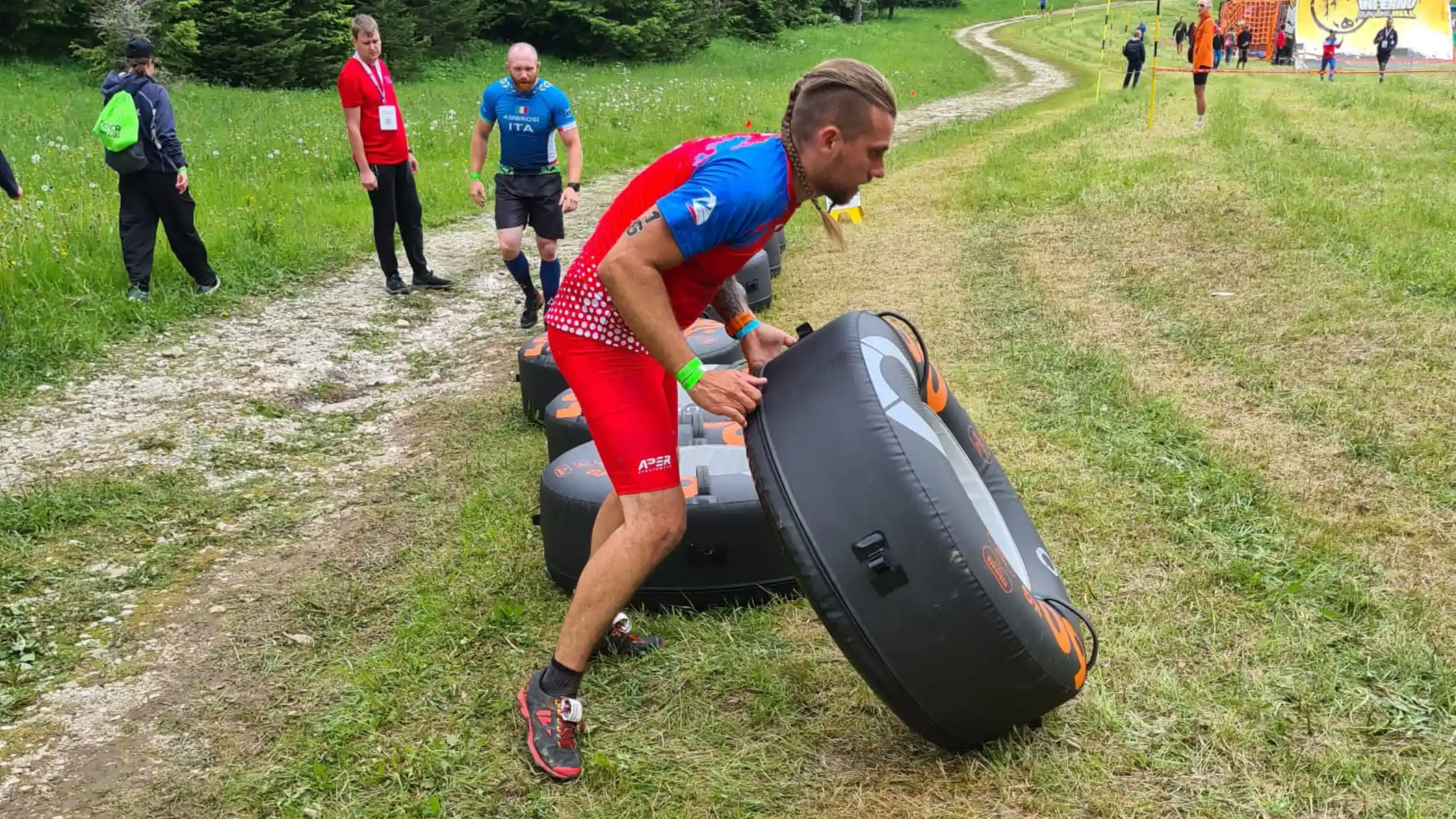
Physical preparation is essential to face the competitions Obstacle Course Racing (OCR), but the mental component is no exception. OCR races can be extremely demanding, both physically and psychologically, requiring strong determination and a well-defined strategy to tackle each obstacle successfully. In this section, we will explore the importance of mental preparation and key strategies to optimize your race performance.
The Mental Component in OCR: How to Prepare
Mental preparation is often what separates a successful athlete from one who struggles to complete a race. Here are some key things to consider:
- View: A powerful technique for mental preparation is visualization. Before the race, take some time to imagine yourself successfully tackling each obstacle. Visualizing yourself calmly and confidently overcoming each challenge can improve your actual performance.
- Stress Management: OCR races can be stressful, especially if you encounter an obstacle that you find particularly difficult. Learning stress management techniques, such as deep breathing and meditation, can help you stay calm and focus on the action.
- Mental Resilience: OCR races test your mental resilience. Being prepared to overcome fatigue, pain and frustration is essential. Training your mind to stay positive and determined, even in the most difficult moments, will help you complete the race.
Strategies to Best Tackle an OCR Race
In addition to mental preparation, it is important to have a clear strategy for the race. Here are some strategies that can make the difference:
- Pacing: Managing your pace is key. Start the race at a sustainable pace to avoid running out of energy too early. It is important to find a balance between speed and endurance to be able to maintain a good pace throughout the race.
- Route Reconnaissance: Study the race course in advance. Knowing the location of the obstacles and the specific difficulties of the course will allow you to better plan your energy and strategy.
- Energy Management: OCR races require a lot of energy. It is important to learn to manage your energy, integrating short breaks to recover, hydrate and nourish yourself with light and carbohydrate-rich snacks, if necessary.
- Adaptability: OCR races can be unpredictable, with changing obstacles or adverse weather conditions. Being mentally prepared to quickly adapt to new situations will help you stay in control and complete the race.
How to Manage Fatigue and Stay Motivated During an OCR Race
Fatigue is inevitable in OCR racing, but how you manage it can determine your success. Here are some tips for dealing with fatigue and staying motivated:
- Breaking the Race into Sections: Instead of looking at the race as one long challenge, think of it in smaller sections, focusing on one obstacle at a time. This helps you stay motivated and avoid feeling overwhelmed.
- Focus on Breath: When you feel overwhelmed by fatigue, focus on your breathing. Deep, controlled breathing can help you calm your mind, better oxygenate your muscles, and reduce the feeling of tiredness.
- Remember Your Why: In difficult times, remind yourself why you are running. Whether it is a personal challenge, a fitness goal, or to support a cause, keeping your focus on your why can give you the push you need to keep going.
The artistic gymnastics exercises free body exercises are the heart of the workout, and can be performed both in the gym and at home, always following the right safety rules. The use of quality equipment, such as Bortolotto mattresses, ensure that you can train with complete peace of mind, reducing the risk of injury and improving your overall performance.
If you are looking for safe and long-lasting solutions for your artistic gymnastics training, discover the Bortolotto mattresses and mats available on iTatami. Designed to offer maximum protection and comfort, our products are ideal for athletes of all levels and guarantee long-lasting durability.
Train with the best tools and take your gymnastics to the next level!
Essential Equipment for OCR

Success in a race of Obstacle Course Racing (OCR) depends not only on your physical and mental preparation, but also on the equipment you use. The clothing, footwear, and mats you train on can make a significant difference in your performance. In this section, we will explore the essential OCR equipment and introduce you to the Bortolotto mattresses, designed to offer you maximum safety and comfort during training.
Clothing and Footwear for OCR
The right OCR clothing should be durable, comfortable, and functional. Here are some tips on what to wear:
- Technical Fabrics: Opt for clothing made of technical fabrics that dry quickly and are resistant to abrasion. Shirts, pants and socks made of breathable materials help keep the body dry and reduce the risk of irritation.
- Specific Footwear for OCR: Shoes are one of the most important elements. Choose trail running shoes with a non-slip and resistant sole that can provide good traction on rough terrain and in wet conditions. Some OCR-specific models also have reinforced toes and heels to protect your feet from impacts.
- OCR Gloves: Gloves can be helpful in protecting your hands when negotiating obstacles like ropes and bars. Look for gloves that provide good grip and are water resistant.
The Importance of Bortolotto Mattresses in OCR Training
When it comes to preparing for an OCR race, safety during training is paramount. Bortolotto mattresses They are designed to offer maximum comfort and protection, allowing you to train with peace of mind and prepare yourself for the challenges of the race.
- Safety and Comfort: THE Bortolotto mattresses They are made of high-quality materials that absorb impacts effectively, reducing the risk of injury during training. Whether you are practicing jumping, climbing or controlled falls, these mattresses offer you the protection you need.
- Durability and Resistance: Thanks to their sturdy construction and the use of resistant materials, the Bortolotto mattresses They are designed to last over time, even with intensive use. This durability makes them a safe investment for any sports center or gym.
- Designed for OCR: THE Bortolotto mattresses are specifically designed to meet the needs of OCR athletes. They offer optimal padding for intense training and are equipped with wear-resistant coatings as well as manufacturing specifications for indoor and outdoor training that guarantee excellent performance even after numerous workouts.
Recommended Products: Bortolotto Mattresses

If you are looking for the best mattresses for your OCR training, we recommend you explore the Bortolotto range of products. These mattresses not only offer safety and comfort, but are also eco-friendly, made from recycled materials that respect the environment.
- Bortolotto Mattresses – Brand Page: Discover the entire range of mattresses and mats designed for gymnastics, martial arts and OCR.
- Technical Specifications: Each Bortolotto mattress is equipped with high-performance padding and innovative coverings such as Btex (double-layered PVC with a carbon fibre design) and AMS (hollow-effect padding), which improve air circulation and impact absorption.
The Equipment That Makes the Difference
In addition to mattresses, other essential items of equipment include:
- OCR Backpack: A good backpack, lightweight and water resistant, allows you to carry the necessary equipment during the race without weighing you down.
- Hand Tape: Used to protect hands from abrasion when overcoming obstacles such as ropes and walls.
- Hydration Pack: Staying hydrated is key. A convenient and easy-to-use hydration system will allow you to drink without interrupting the pace of the race.
The right gear can make a big difference in your preparation and performance during an OCR race. Bortolotto mattresses by iTatami, in particular, are an excellent choice to ensure safety and comfort during training, helping you to better prepare yourself to face any challenge. In the next section, we will focus on theSpecific OCR Training for Men and Women, exploring differences in training needs and offering advice on how to optimise racing performance for both genders.
Specific OCR Training for Men and Women
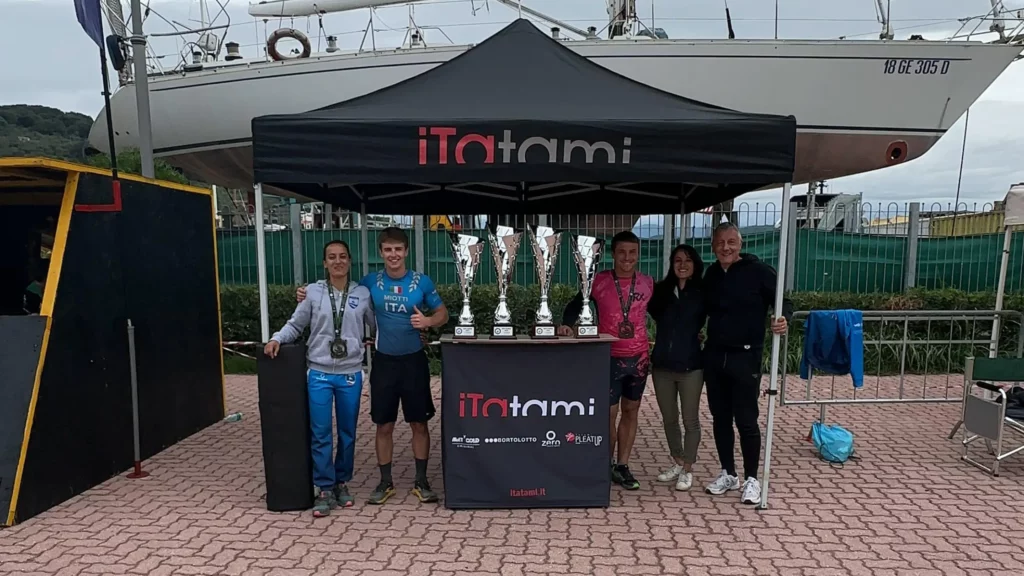
When it comes to Obstacle Course Racing (OCR), training needs can vary between men and women due to physiological and body composition differences. However, both genders can excel in this sport by adopting personalized training strategies. In this section, we will explore the key differences between theOCR training for men And women and provide advice on how to optimize the performance of each.
Physiological Differences in OCR Training
Men and women have different body compositions, which can influence how they approachOCR training. Here are some of the key differences to consider:
- Muscle Strength: In general, men tend to have more muscle mass than women, particularly in their upper bodies. This means that men may find it easier to overcome obstacles that require pulling strength, such as rope climbs or monkey bars. Women, therefore, may need to work harder on their upper body strength to achieve similar levels of performance.
- Resistence: Women tend to have greater muscular endurance than men, which can give them an advantage in longer races and obstacles that require repetitive effort.OCR training for women should therefore include exercises that exploit this resistance, such as high intensity circuits with higher repetition volumes.
- Agility and Flexibility: Women often excel at agility and flexibility, which can be beneficial for overcoming complex obstacles and maintaining good technique during a race. Men, on the other hand, may want to include more mobility exercises in their training to improve these skills.
OCR Training for Men
For men, the emphasis is on theOCR training should be placed on developing explosive strength, cardiovascular endurance, and upper body power. Here are some specific tips:
- Increase Upper Body Strength: Integrate exercises like the deadlift, bench press, and pull-ups into your training plan to build the strength needed to overcome challenging obstacles.
- Power Exercises: Plyometric exercises such as box jumps and kettlebell jumps help develop explosive power in the legs, which is essential for tackling obstacles such as walls and jumps.
- Cardiovascular Endurance Work: Add interval training sessions and long distance runs to improve your ability to maintain a high pace throughout the race.
OCR Training for Women
For women, theOCR training should focus on developing functional strength, endurance, and flexibility. Here are some suggestions:
- Upper Body Strengthening: Since upper body strength can be an area for improvement, exercises such as push-ups, pull-ups, and rope climbing are essential.
- Resistance Circuits: Women can benefit from high-intensity circuits that combine strength and cardio, such as kettlebell circuits, burpees, and long runs on mixed terrain.
- Improving Mobility: Yoga or dynamic stretching exercises can be included in the training plan to maintain good flexibility, reducing the risk of injury and improving fluidity in movements during the race.
Recommended OCR Exercises for Men and Women
Here are some exercises that should be included in every fitness plan. OCR training, regardless of gender:
- Pull-Ups: Essential for building the upper body strength needed to tackle obstacles like walls and ropes.
- Push-Ups: They strengthen the chest, shoulders and triceps, improving the ability to push during obstacles.
- Squat with Jump: They improve the explosive power of the legs, which is essential for jumping and overcoming obstacles.
- Plank: Strengthens your core, improving stability and body control during OCR training.
Customize theOCR training for both men and women is essential to maximizing your racing performance. Understanding the physiological differences and adapting your training program accordingly can make a big difference in your final results. In the next section, we’ll wrap up the guide by summarizing the main points and offering tips on how to best prepare for your next OCR race.
Additional Resources
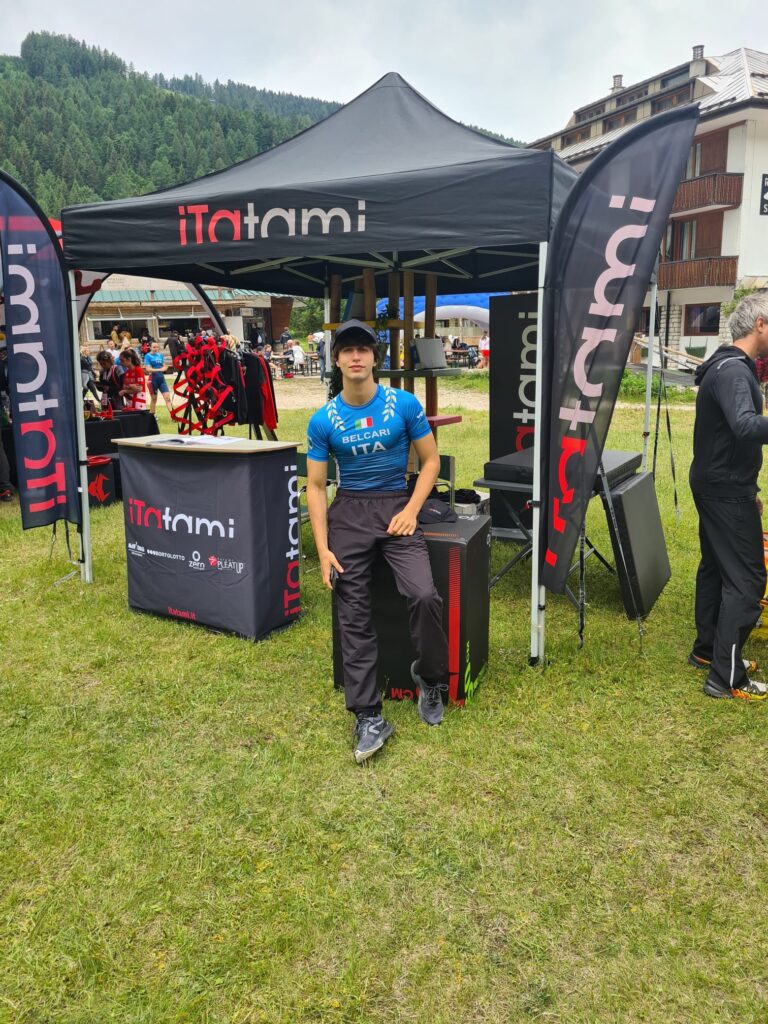
To continue improving your skills inObstacle Course Racing (OCR) and stay up to date on the latest techniques and strategies, it is helpful to refer to additional resources such as books, online courses, and workshops. Additionally, there are numerous research studies that can offer scientific insights into improving athletic performance.
Recommended Books and Online Courses
- Books:
- “Obstacle Race Training: How to Beat Any Course, Compete Like a Champion and Change Your Life” by Margaret Schlachter. This book offers a complete guide to training for OCR racing, with advice on technique, nutrition, and mental preparation.
- “The Essentials of Obstacle Race Training” by David Magida and Melissa Rodriguez. Another excellent manual that covers all aspects of OCR training, from beginners to professionals.
- Online Courses:
- OCR Training Camp: An online course dedicated to OCR training, with personalized training plans, video tutorials and support from expert coaches.
- Spartan SGX Certification: An OCR Coach Certification course, offered by Spartan Race. While designed for coaches, it is a valuable resource for anyone looking to delve deeper into OCR training techniques.
Links to Relevant Research Studies
For those interested in understanding the science behind OCR training, here are some research studies that may be helpful:
- “Physiological Demands of Obstacle Course Racing: A Systematic Review”: This study examines the physiological demands of OCR racing, offering insights into how to tailor training to maximize performance.
- “Strength and Conditioning for Obstacle Course Racing: A Systematic Review”: Another study that focuses on the strength and conditioning aspects needed to be successful in OCR racing.
- “The Role of Mental Toughness in Obstacle Course Racing Performance”: This study explores the importance of mental resilience in OCR performance, offering strategies to develop a winning mindset.
Use these additional resources will help you further deepen your OCR knowledge and continually improve your training. Whether you’re looking to perfect your technique, build a winning mindset, or explore new training methods, these resources can provide you with the information and tools you need to excel.
In the next and final section, we’ll wrap up our guide by summarizing the key points covered and offering final tips to help you succeed in your next OCR race.
Get Ready for Your Next OCR Race
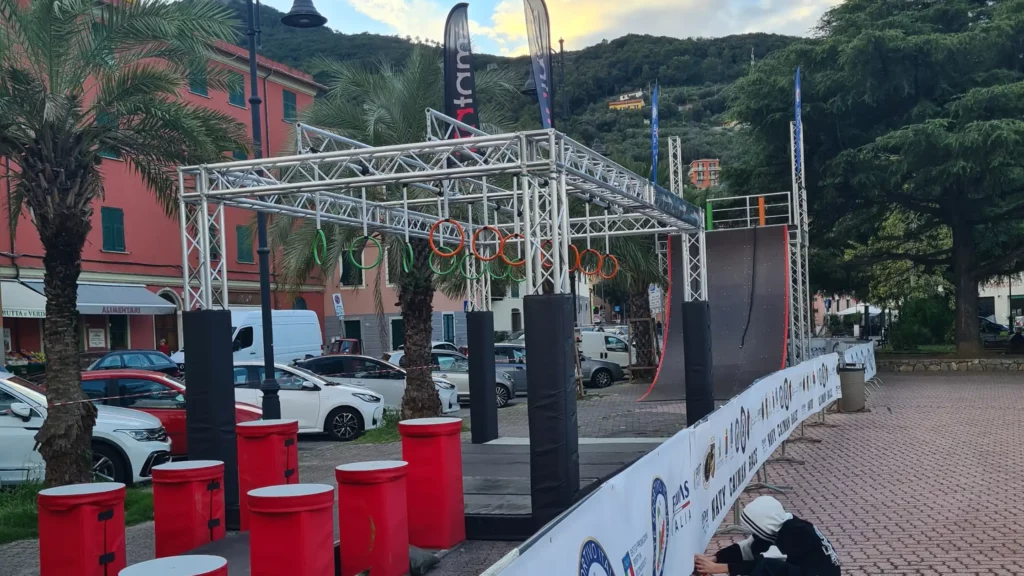
After exploring all the fundamental aspects of theOCR training, you are now ready to approach your next races with greater confidence and preparation. Whether you are a beginner taking your first steps or an advanced athlete looking to hone your skills, well-structured and focused preparation is essential for success.
Summary of Key Points
- Importance of OCR Training: Specific preparation is essential to successfully face the unique challenges of OCR racing.
- Beginner Training Plan: Starting with a solid foundation of strength and endurance is crucial to developing the necessary skills.
- Advanced Training: As you progress, it is important to intensify the exercises and focus on more advanced techniques.
- Functional and Bodyweight Training: These exercises are essential for improving functional strength and mobility.
- Mental Preparation: Meeting the mental challenges of an OCR race is just as important as physical preparation.
- Essential Equipment: Using the right equipment, including Bortolotto mattresses, can greatly improve your performance.
- Specific Training for Men and Women: Tailoring your training to your specific physiological needs can make all the difference in your race.
Final Tips
Finally, remember that the key to success in OCR races is a balance between physical and mental preparation and the use of high quality equipment. Don't forget to visit the Bortolotto mattress page to discover the best solutions for your workout. These mattresses will not only offer you maximum comfort during your workout, but will also help you prevent injuries and improve your performance.
Also, keep exploring additional resources and studying champions' techniques to hone your skills. Every OCR race is a new challenge, but with the right preparation, you are ready to overcome any obstacle and reach new goals.

